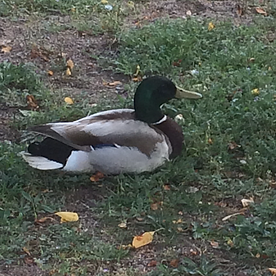
ECOLOGY
Energy Transfer
Energy is transferred throughout an ecosystem in many different ways. Organisms are split into three categories based on how they retrieve energy from their ecosystem. These three categories are: autotrophs, heterotrophs, and decomposers.

Autotroph
An autotroph is an organism that is capable of making of making its own glucose as a result of photosynthesis. This Red Oak is an example of a autotroph because it contains chlorophyll, which is necessary for photosynthesis. In result of this, the Red Oak has the ability to make its own glucose.

Heterotroph
A heterotroph is an organism that obtains its nutritional requirements from other organisms. The Mallard Duck’s typical diet consists of plants, grains, and at times they will feed on mussels, insects, or other invertebrates.

Decomposer
Decomposers break down decaying or dead organisms. They also break down the waste of other organisms. This allows the nutrients left in these dead animals to be available to the soil and the ecosystem. Decomposers, like the worm shown in the picture, also take in these nutrients for themselves.